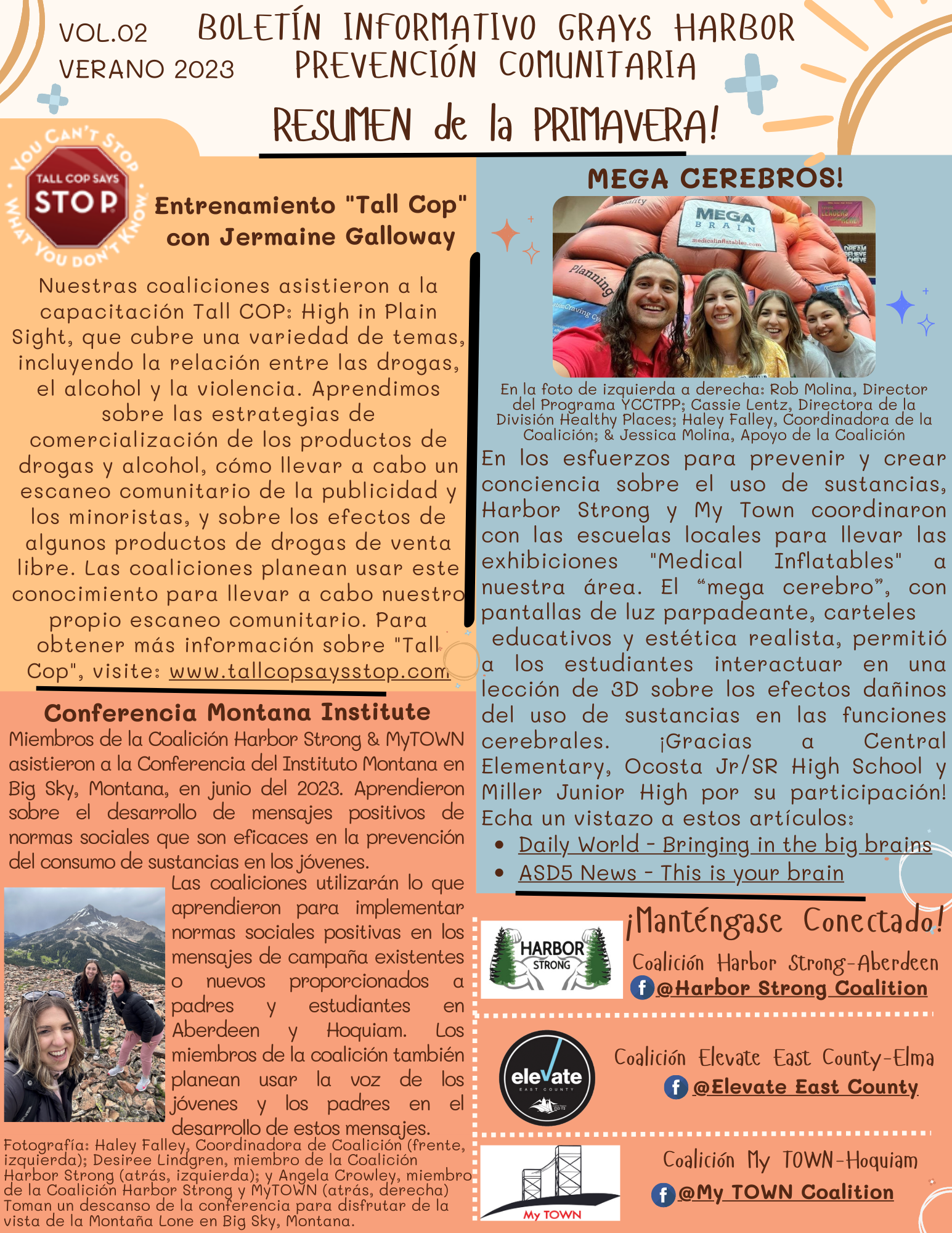Harbor Strong Coalition
Dan Hammock
Home > Harbor Strong Coalition
Harbor Strong Coalition
The Harbor Strong Coalition’s mission is to prevent and reduce substance abuse and related problems to youth, adults, and families by providing leadership, education and community partnerships and promoting a healthy, positive lifestyle.
Grays Harbor County Public Health staff serve as the Harbor Strong Coalition Coordinator.
In efforts to expand community awareness regarding youth cannabis and commercial tobacco prevention efforts in our community, we have developed a bilingual community newsletter! . This newsletter will continue to be shared out on a quarterly basis.
English summer Newsletter
boletín de verano español
CLOSED: Request for Proposals for Medication Lock Boxes
This RFP has closed.
Grays Harbor County has issued a “Request for Proposals” (RFP) for the intent of contracting with the lowest bidder to sell medication lock boxes to the County, to later be distributed through the Harbor Strong Coalition and MyTOWN Coalition. The qualified medication lock box supplier will be identified as having interlocking devices available for sale upon request of the County. The qualified supplier will be used to supply medication lock boxes, for a set rate per medication lock box, at a cost not to exceed $40,000 for one (1) year.
This RFP opens February 13, 2023. All applications are due by Tuesday, February 28, 2023 by 4:30pm Pacific Time.
CLICK HERE for the full Request for Proposals document and application.
For questions, please contact Haley Falley at haley.falley@graysharbor.us.
Questions and answers
Do lock boxes need to be individually packaged, or can they be bulk-packaged?
Lock boxes may be packaged individually or packaged in bulk.
Does the product have to be a medication lock box or a medication lock bag?
Grays Harbor County is accepting applications for all types of products that serve the purpose of locking medications securely.
What type of lock is needed for the product you are looking for?
Lockable products by way of a combination lock, key, or padlock are acceptable.
Approximately how many boxes do you expect to buy?
Grays Harbor County will purchase boxes based on the size, type, and cost of each product. This will be determined by the product proposed through the RFP and the cost to each product to not exceed $40,000 for the contract period.
Would you want the quantity to be delivered in one release, or do you expect to make multiple smaller orders over the course of a year?
Funding priorities for the coalitions are subject to change. However, we will likely have a large purchase at the beginning of the contract in addition to multiple small orders over the course of the contract. Our coalitions would like to resupply as soon as possible.
Do you intend to select and order just one size, or do you foresee ordering a variety of sizes?
The size choices of the medication lock boxes will depend on what is proposed by the applicant, product availability, and by price breakdown. Our coalitions have purchased a variety of sizes of lock boxes in the past.
Must each box be keyed differently/uniquely, or can all boxes be keyed alike (meaning that the same key would open any box)?
Our coalitions will not have the capacity to track key codes, keys, or other locking methods for the recipient of the medication lock boxes. The recipient of the product will be in charge of either setting their own key code or maintaining possession of their key or other device method.

















![group of people with arms around [Converted]-01.png](https://images.squarespace-cdn.com/content/v1/53ee83dee4b027cf34f1b520/1582136568054-N6HWILC3QUQEAN1VBXHV/group+of+people+with+arms+around+%5BConverted%5D-01.png)
![caring hands [Converted]-01.png](https://images.squarespace-cdn.com/content/v1/53ee83dee4b027cf34f1b520/1582135130550-EO1JUDGCA8XDTNVP3023/caring+hands+%5BConverted%5D-01.png)

![high five [Converted]-01.png](https://images.squarespace-cdn.com/content/v1/53ee83dee4b027cf34f1b520/1582136058032-KTGFRPR7U073FI3AKUJ5/high+five+%5BConverted%5D-01.png)

